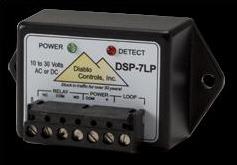
Electric gate opener repair
 Your gate has gone kablooey and you’re feeling Superman or Superwoman-ish, ready to tackle a DIY fix-it project with wild abandon.
Your gate has gone kablooey and you’re feeling Superman or Superwoman-ish, ready to tackle a DIY fix-it project with wild abandon.
Well let’s get you started.
The Mechanics
Let’s say your gate is stuck stubbornly open, refusing to close no matter how hard you command it to.
The first thing to try is to determine if the problem is being caused by a mechanical issue—that is, something physically wrong with the gate or the gate hardware-or if the problem is being caused by an issue with the automated equipment such as the gate opener, the access control, or the reversing/safety devices.
Here’s a short “to do” list:
1. If your gate is a slide gate, look for broken wheel bearings, damaged track, or damaged chain. If you’ve got a swing gate on your hands, look for a damaged gate arm, seized or broken hinges, or a physical obstruction.
2. If you don’t see anything in the above areas, shut the power off, disconnect the chain (if it’s a slide gate), or disconnect the gate arm (if it’s a swing gate), and try to move the gate open by hand. If the gate opens easily, then the gate itself is not the culprit and you can stop eyeing it suspiciously.
3. If you do determine that there is a mechanical issue, begin talking to yourself. Start with the question, “Can I fix this myself?”
You didn’t ask yourself that question aloud did you? Anyhow, we’ll actually help you answer this question with this short list of mechanical issues that you may be able to repair yourself:
- a wheel that has failed and is causing your slide gate to bind up;
- or a hinge on a swing gate that needs to be lubed.
Told you we’d keep the list short. If you feel you’re particularly handy, you might be able to fix problems even more complex than those listed above.
4. If it is a mechanical issue that you don’t feel comfortable tackling yourself, call in the pros and they’ll whip your gate into shape. Bonus: If you have a picture of the damage that you can submit to the gate installer you select, you may be able to save some money and time by potentially eliminating a first trip diagnostic charge. Booya!
If you determine that it is not a mechanical issue, it’s time to check the electrical side of things.
1. First thing’s first: reset the power on the gate operator. Sometimes the advanced electronics in modern day gate equipment get confused, and all that is necessary is a restart (Ahem, Microsoft Windows users, you know about this kind of confusion that requires a restart).
Depending on the type of gate operator you have, this may require that you disconnect main power by turning off a breaker, unplugging a transformer, disconnecting backup power by turning off a switch, and/or disconnecting a battery. Regardless of the method, your goal is to disconnect both AC power and DC power to do a full reset of the equipment.
 2. If a reset doesn’t solve the problem, there are a few things you can check on your own to hopefully avoid a service call. Yes, here’s another "to do" list. Ok, sure we can be a little bossy but we do mean well.
2. If a reset doesn’t solve the problem, there are a few things you can check on your own to hopefully avoid a service call. Yes, here’s another "to do" list. Ok, sure we can be a little bossy but we do mean well.
A Common Problem: The Gate That Just Won’t Close
- Firstly, make sure that a “hold open” command has not been entered into the keypad. It is not uncommon that one member of a household enters a "hold open" command, and another member of the household spends their time trying to figure out why the gate won’t close.
- Secondly, check the fire department key switch. Maybe the fire department came by to test the switch and they forgot to switch it back to normal operation. Or perhaps the electrical switch on the back of the key cylinder is corroded.
- If your system has photo eyes, those should be checked next. Are they reflective? If so, is the reflector clean? Is it in good condition? If they are dual power, are the lenses clean and are they in good condition?
- If you have reversing edges, the transmitters for the edges may be malfunctioning. Depending on the type of edge transmitter you have, you may need to replace the battery. If the battery is good, but there is visible corrosion or damage to the transmitter, the transmitter may need to be replaced.
- Another device to check is the vehicle loop detectors located inside the gate operator. If this is malfunctioning, the output LED will be illuminated and a reset of the gate operator may not eliminate the problem (on many models, the “output” LED is labeled “Detect”, however, this is completely contingent on the model of your detector so please check your manual).
The easiest way to determine if the loop detector itself is the problem is to switch out the current detector with another one (often, there are two detectors in the operator so you can switch one with the other to try this test). If the newer loop detector’s output light also stays on, then the problem is probably your loop and, unless you want to bust out jackhammers or concrete saws to tear up your driveway to get at the loop, you’re going to want to contact a gate repair person. If, however, the newer detector works just fine and the output light doesn not stay on, then you’ll want to replace the detector that is giving you a hard time.









